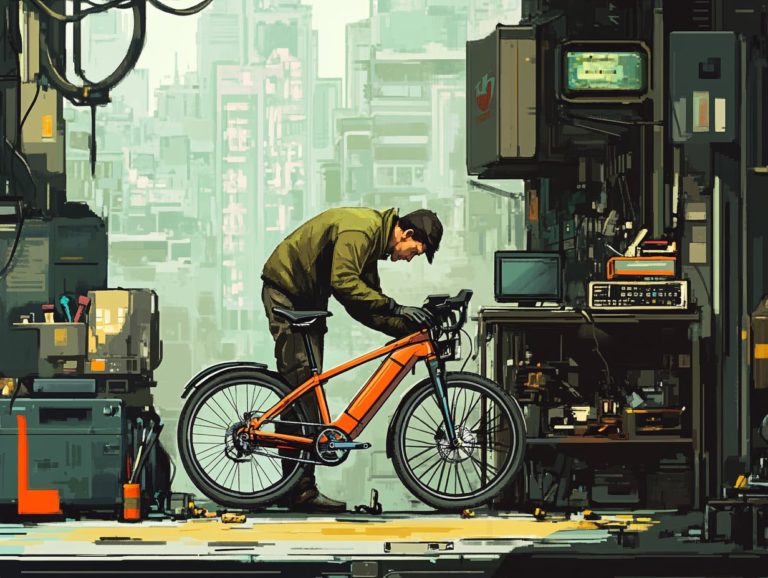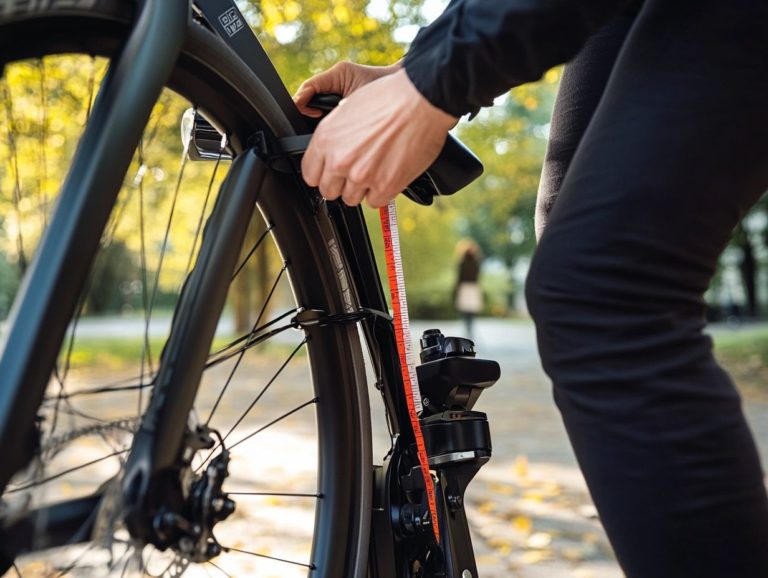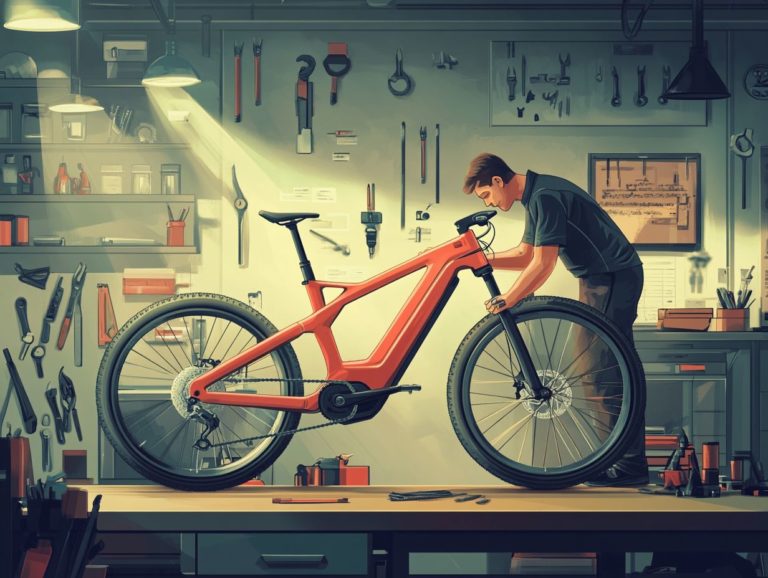How to Inspect Your Electric Bicycle Before Riding
Before you set off on your electric bicycle, a pre-ride inspection is essential for ensuring a safe and enjoyable journey.
Regular inspections not only enhance your bike s performance but also extend how long your bike lasts. This guide will take you through a thorough inspection process, covering key areas such as:
- Tire condition
- Brake functionality
- Electrical components
- Frame integrity
Don t forget to test your lights and signals as well. Arm yourself with the knowledge that could make all the difference on your ride.
Contents
- Key Takeaways:
- Why Pre-Ride Inspection is Important
- Inspecting the Tires
- Checking the Brakes
- Examining the Electrical Components
- Inspecting the Frame and Handlebars
- Testing the Lights and Signals
- Frequently Asked Questions
- 1. What are the key components of an electric bicycle, such as my KBO eBike or Himiway eBike, that I should inspect before riding?
- 2. How should I inspect the brakes on my electric bicycle?
- 3. What should I look for when inspecting the tires on my electric bicycle?
- 4. How do I check the lights on my electric bicycle?
- 5. Can I inspect the battery on my electric bicycle?
- 6. How do I ensure the handlebars on my electric bicycle, such as the A7 Pro, are safe to ride with?
Key Takeaways:
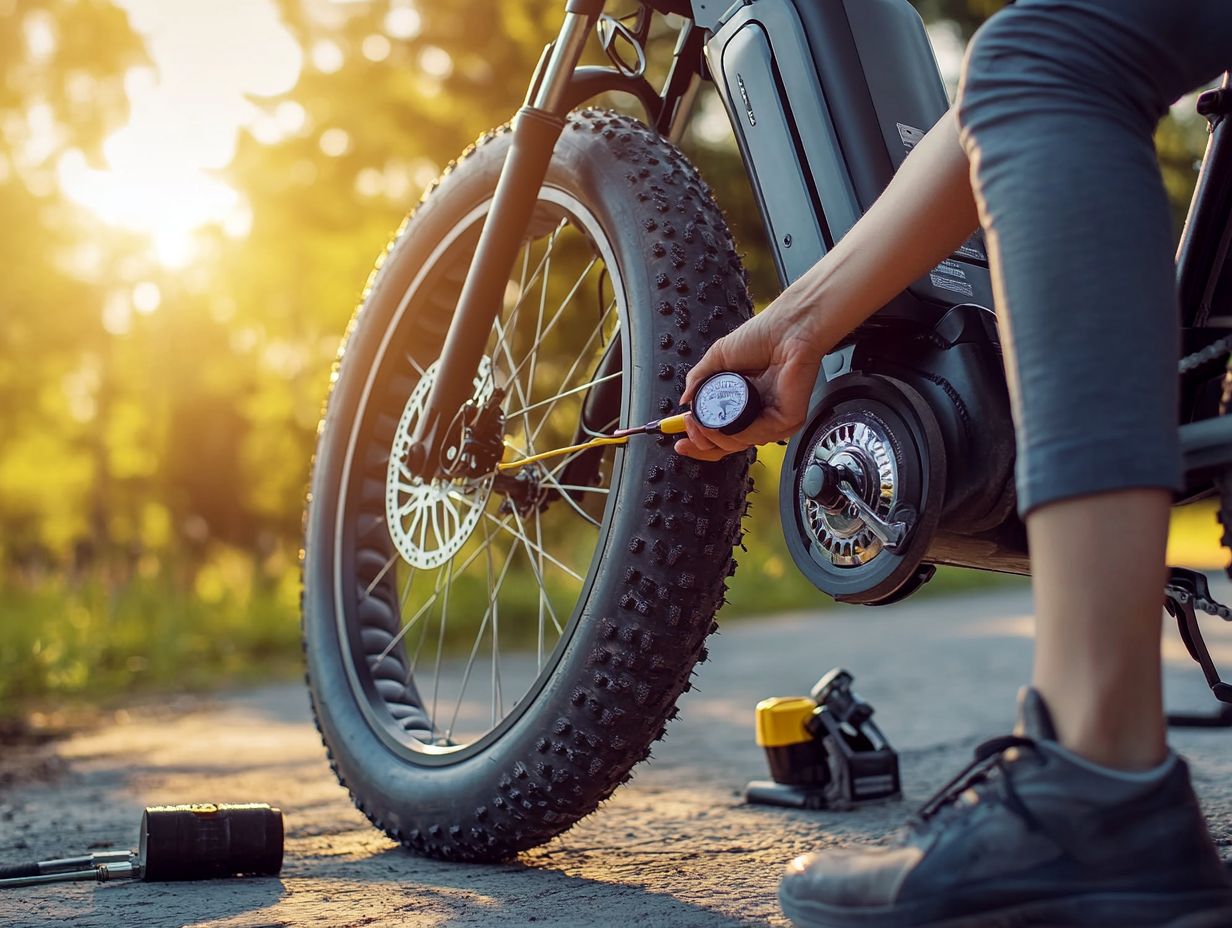
- Regular pre-ride inspections can ensure your electric bicycle is safe and functioning properly.
- Check tire pressure, tread, and condition regularly to prevent accidents and maintain smooth riding.
- Inspect brake pads, levers, and cables to ensure efficient braking and avoid potential accidents.
Why Pre-Ride Inspection is Important
Pre-ride inspections are essential for ensuring the safety and longevity of your eBike, whether you own a KBO or a Himiway model. By performing a thorough safety inspection, you can identify potential issues before they escalate into accidents. This makes your ride smoother and more enjoyable.
Your pre-ride checklist should encompass crucial safety checks and maintenance tasks. Examine the brake system, tires, and electrical components. This proactive approach boosts your safety and helps your electric bike last longer. Additionally, consider following these tips for winterizing your electric bicycle, paving the way for countless thrilling rides in San Diego and beyond.
Benefits of Regular Inspections
Regularly inspecting your eBike offers many benefits that enhance safety, performance, and longevity, especially for popular models like the KBO eBike and Himiway eBike.
By conducting these assessments, you ensure that critical components are functioning at their best. This significantly minimizes risks while riding. Your inspections should cover vital areas, such as brake checks because worn pads can compromise your stopping power, and a thorough examination of electrical components, ensuring that your battery and motor function reliably. For more detailed guidance, consider the safety tips for electric bicycle repair at home.
By proactively addressing any issues, you can drastically reduce future repair costs while enjoying a smoother and more efficient ride. Ultimately, these routine evaluations not only elevate your overall experience but also contribute to the sustainability of your eBike. For example, learning how to perform electric bicycle wire inspections makes it a wise investment for the long haul.
Inspecting the Tires
Inspecting the tires of your eBike is an essential practice that guarantees optimal performance and safety on your journeys, particularly with models like the Himiway and KBO electric bikes.
Engaging in proper tire maintenance means you re checking for the correct tire pressure, ensuring adequate tread depth, and evaluating the overall condition of the tires. This careful checking helps you sidestep potential hazards while riding.
A comprehensive tire check prevents accidents and elevates your riding experience. You can relish every moment on your electric bike, whether you re cruising through San Diego or exploring other scenic routes.
Tire Pressure, Tread, and Condition
Maintaining the correct tire pressure is essential for your eBike s safety and efficiency. Improper inflation can lead to poor handling and increased tire wear, which is certainly not what you want on your rides.
To ensure optimal performance, make it a habit to check your tire pressure regularly with a reliable gauge ideally before each ride or at least once a month. You ll find the recommended pressure range printed on the sidewall of your tires. Staying within this range promotes better grip and stability across various terrains, making your rides much more enjoyable.
You should also keep an eye on tread depth. Sufficient tread provides the necessary traction for safe braking and cornering. Watch out for any signs of wear, like uneven tread or visible cracks. If you notice these issues, it might be time to invest in new tires to maintain your eBike s performance and ensure your safety on the road.
Don t wait inspect your bike today to ensure a smooth ride tomorrow!
Checking the Brakes
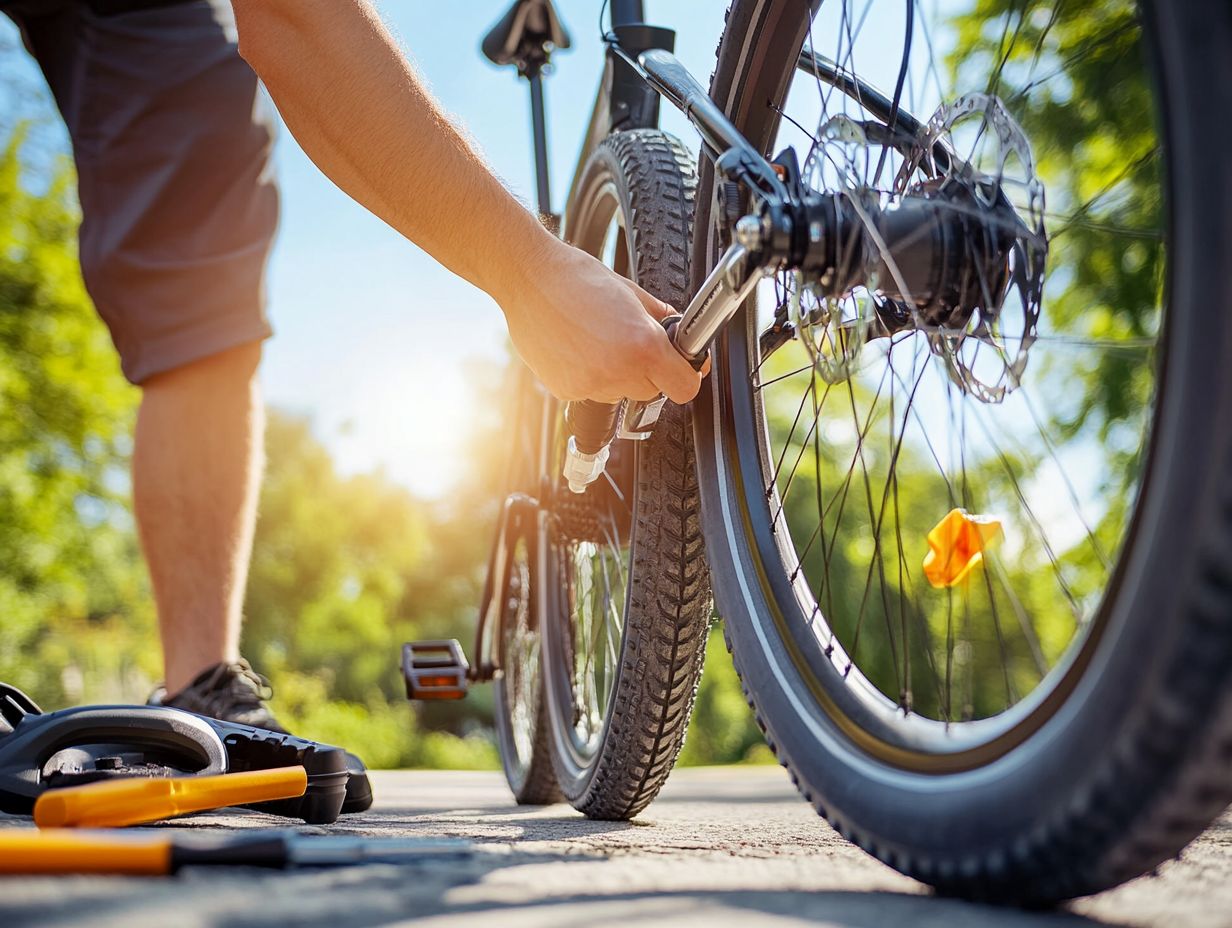
Checking the brakes on your bike is an essential safety measure that guarantees dependable stopping power, especially for high-performance models like the KBO and Himiway eBikes.
A thorough brake inspection involves:
- assessing the brake pads for wear,
- examining the cables for fraying, and
- ensuring the brake levers operate smoothly.
Diligently maintaining your brakes can significantly reduce the chance of accidents and keep your ride thrilling!
Brake Pads, Levers, and Cables
The condition of your brake pads, levers, and cables is crucial for the overall safety of your bike; any problems could lead to serious accidents.
Regularly assess your brake pads for wear. Inspect the thickness and look for uneven surfaces.
It’s vital to test the brake levers for smooth operation. They should engage easily without any sticking or unusual resistance, ensuring reliable performance when you need it most.
Don’t overlook examining the cables for fraying or damage; even small issues can compromise your braking capabilities. For more in-depth knowledge, consider following essential maintenance tips for commuting electric bicycles. Keeping these parts well-maintained not only enhances your safety but also contributes to the overall longevity and performance of your bike.
Examining the Electrical Components
Examining the electrical components of your bike is crucial for maintaining the reliability and performance of the entire system. This includes essential elements such as the battery, motor, and wiring.
By conducting thorough inspections of these electrical components, you can identify potential issues that may impact your bike’s functionality, especially with popular models like KBO and Himiway. Regularly checking your battery not only prevents breakdowns but also enhances riding efficiency, making it a critical aspect of your maintenance routine. Additionally, knowing how to clean your electric bicycle properly can further ensure optimal performance.
Battery, Motor, and Wiring
The battery is the heart of your bike, and maintaining it, along with the motor and wiring, is essential for optimal performance and safety.
To ensure a smooth ride, start with a thorough battery inspection. Check the charge levels and be on the lookout for any signs of corrosion or leakage.
Next, assess the motor’s functionality by taking your bike for a short test ride; this helps you gauge its responsiveness and listen for any unusual noises. Also, examine the wiring for any damage or wear. Inspect the connection points and insulation, ensuring there are no exposed wires that could lead to shorts. For a comprehensive approach, refer to the electric bicycle maintenance checklist for owners.
By prioritizing these maintenance tasks, you can significantly enhance the longevity and efficiency of your bike, fostering a safer and more enjoyable riding experience. Additionally, learning how to store your electric bicycle properly can empower you to enjoy your bike to the fullest and ride safely!
Inspecting the Frame and Handlebars
Inspecting the frame and handlebars of your bike is crucial for maintaining structural integrity and ensuring your safety as a rider. This means carefully checking for cracks, rust, and any loose components that could affect performance.
Conducting a thorough frame inspection should be a key part of your regular safety routine, particularly with models like KBO and Himiway. For more detailed guidance, refer to this resource on how to maintain your electric bicycle for longevity. Structural issues can pose serious hazards while you’re out riding, so it’s wise to stay vigilant.
Cracks, Rust, and Loose Parts
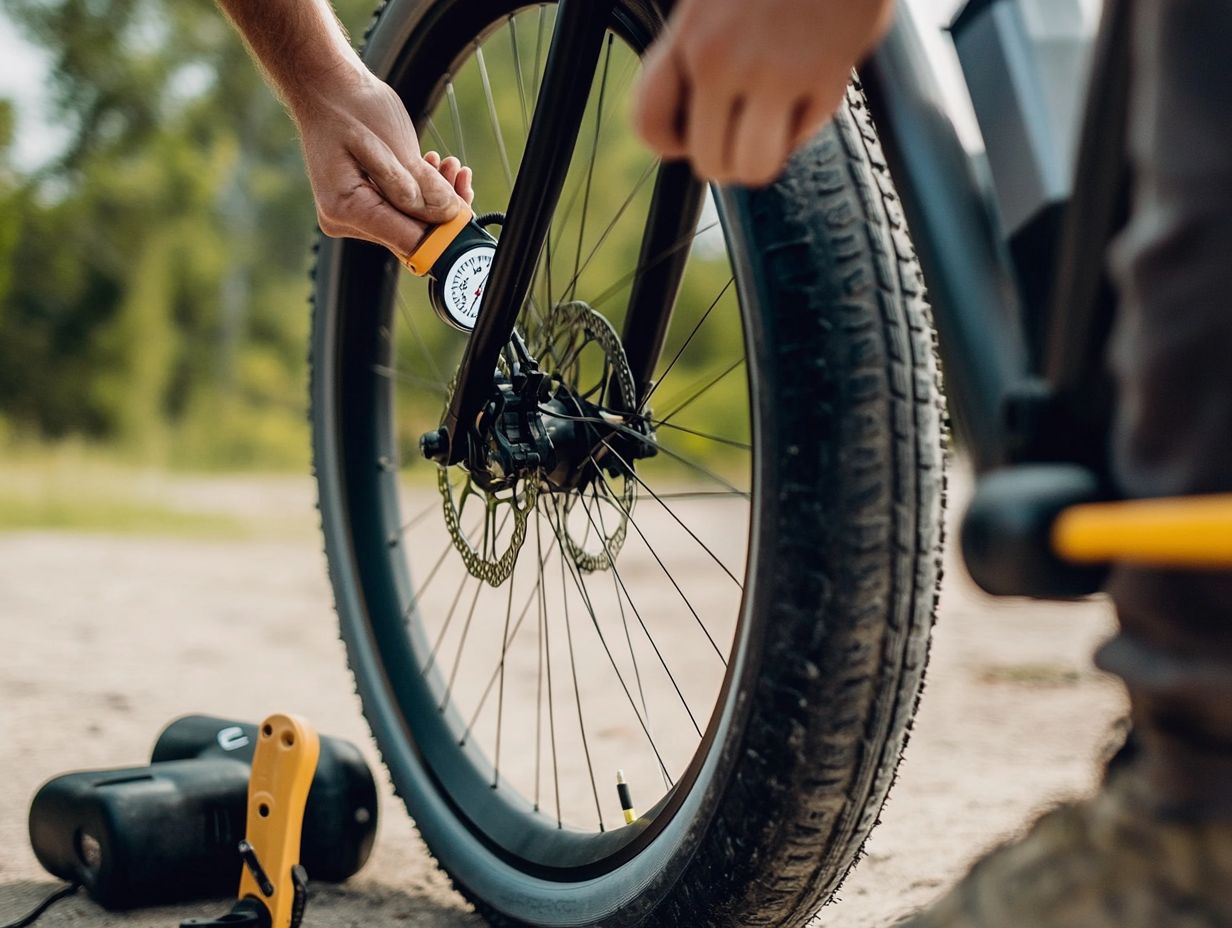
Identifying cracks, rust, and loose parts during your eBike inspection is essential for ensuring both safety and functionality. A thorough inspection is a safeguard. It prevents accidents and costly repairs.
Pay close attention to the eBike’s frame, particularly around the welds and joints where stress tends to accumulate. When assessing for rust, look for any discolorations or pittings, as these can be signs of deeper issues that require immediate attention.
Check that important parts like the handlebars, seat, and wheels are tight. Use the appropriate tools to tighten any loose screws or bolts.
By taking these proactive steps, you ensure that your eBike remains a reliable and enjoyable mode of transportation, whether for daily commutes or leisurely rides.
Testing the Lights and Signals
Inspect the lights and signals to ensure your safety. This is a crucial element of your safety inspections, ensuring you remain visible and effectively communicate with other road users, especially in low-light conditions.
The proper functioning of your headlights, tail lights, and turn signals is paramount for safe navigation. For high-quality models like KBO and Himiway, this diligence can dramatically reduce the risk of accidents. Additionally, regular maintenance, including a guide to electric bicycle frame maintenance, allows you to ride with confidence and peace of mind.
Headlights, Tail Lights, and Turn Signals
The functionality of your headlights, tail lights, and turn signals is vital for the safety of your eBike, as these components significantly enhance your visibility in a range of riding conditions.
Ensuring that each lighting element operates effectively not only safeguards you as the rider but also contributes to the overall safety of everyone sharing the road. Testing your headlights is straightforward just illuminate a dark area and check if they project an adequate beam. Don t forget to assess your tail lights for brightness and visibility from behind. Regularly evaluate your turn signals for clarity and responsiveness as well.
When any of these lights malfunction, you risk creating dangerous situations, including potential accidents or collisions. That’s why routine maintenance is essential; it keeps your eBike safe and legally compliant, allowing you to ride with confidence. Be aware of the signs your electric bicycle needs immediate repair to ensure optimal performance.
Frequently Asked Questions
1. What are the key components of an electric bicycle, such as my KBO eBike or Himiway eBike, that I should inspect before riding?
Before you ride your electric bicycle, make sure to check the brakes, tires, lights, battery, and handlebars. Always check before you ride!
2. How should I inspect the brakes on my electric bicycle?
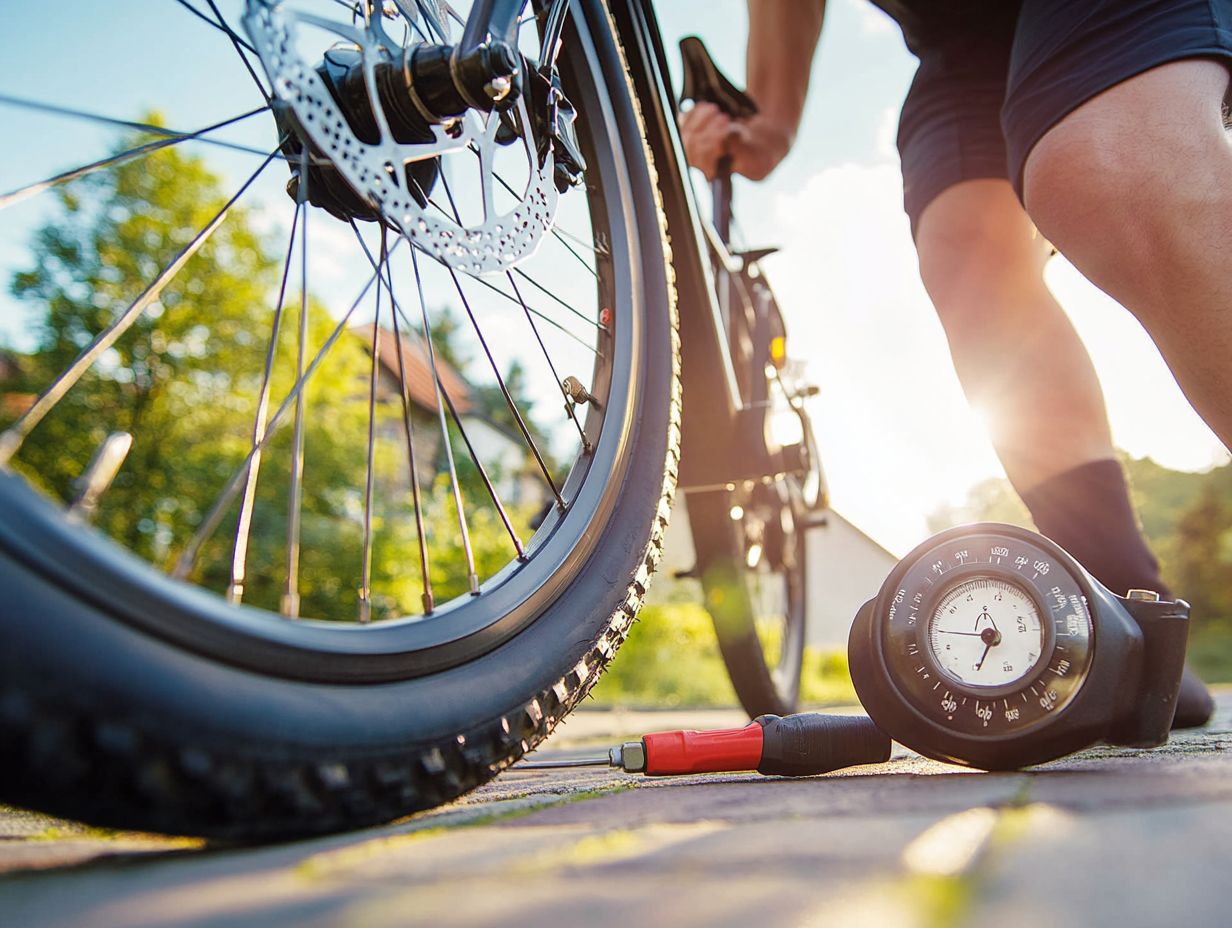
To inspect the brakes, squeeze them gently to see if they are responsive and check the brake pads for wear. Also, make sure the brake cables are not frayed or damaged. If any issues are found, it’s crucial to get them repaired before riding.
3. What should I look for when inspecting the tires on my electric bicycle?
Inspect the tires for any signs of wear, cracks, or bulges. Check the air pressure and make sure it is at the recommended level. Ensure that the tires are properly inflated for a smooth and safe ride.
4. How do I check the lights on my electric bicycle?
Turn on the lights and make sure they are all functioning properly. If any lights are not working, replace the bulbs or get them repaired before riding. Functioning lights are essential for visibility and safety on the road.
5. Can I inspect the battery on my electric bicycle?
Yes, it’s important to inspect the battery before every ride. Check the charge level and make sure it is fully charged. If the battery is not holding a charge, it may need to be replaced urgently. Also, check for any damage or loose connections.
6. How do I ensure the handlebars on my electric bicycle, such as the A7 Pro, are safe to ride with?
Ensure the handlebars are securely attached to the frame. Check for any cracks or damage.
The handlebars should be straight and not loose. Make sure your handlebars are stable for a safe and enjoyable ride!



